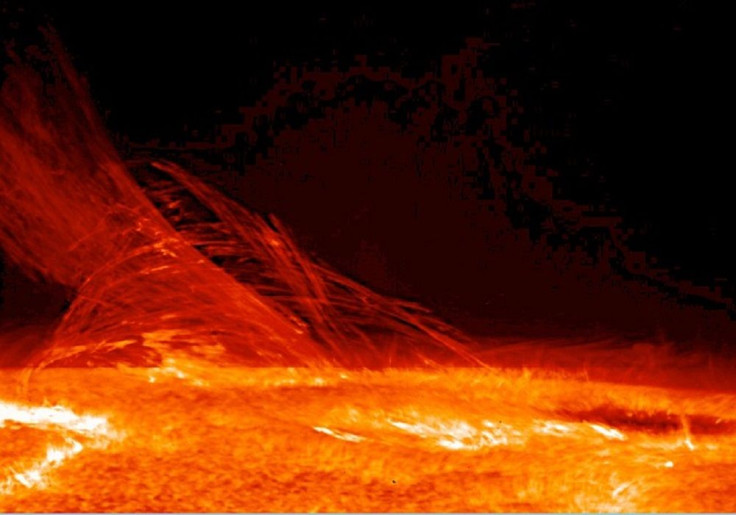Solar Cycle 25: Why Experts Are Keeping Their Eyes On The Sun
KEY POINTS
- Experts predict Solar Cycle 25 to be below average but they're still keeping their eyes on the sun
- Major solar activity can affect daily life on Earth and the lives of astronauts in space
- Experts stress the importance of prepaation when it comes to space weather
Experts confirmed that Solar Cycle 25 has begun and experts are keeping an eye on the sun even if it's expected to be another "below average" cycle.
The sun goes through what's called a solar cycle wherein its magnetic field completely flips every 11 years, with its north and south poles switching places until the next cycle when they switch back. Throughout the cycle, the activity on the surface of the sun gets affected, changing the amount of activity on its surface depending on which part of the cycle it is in.
At the beginning of the cycle, called the solar minimum, there is minimal activity on the surface and the sun has the least amount of sunspots. But this activity picks up and the sunspots increase as the cycle progresses, with the middle of the cycle called the solar maximum having increased activity and the most sunspots.
Eventually, the activity fades again until a new cycle begins.
On Tuesday, the Solar Cycle 25 Prediction Panel announced that Solar Cycle 25 is already underway. During the media event, experts from NASA and the National Oceanic and Atmospheric Administration (NOAA) explained that the solar minimum actually happened in December of 2019 but that it typically takes months to actually confirm and declare the event. Now that the solar minimum has passed, solar activity is expected to pick up until the solar maximum predicted to be in July 2025.
According to the NASA news release, the experts predict the current solar cycle to be rather similar in strength as the last one, which was considered to be below-average. In fact, earlier in the year, some scientists had even predicted that we were headed for a "Grand Solar Minimum" leading to a mini ice age, although this was said to be unlikely given current global warming because of human carbon emissions.

That said, the experts still stressed the importance of preparing for space weather and possible spikes in solar activity.
"Just because it's a below-average solar cycle, doesn't mean there is no risk of extreme space weather," panel co-chair and physicist at NOAA's Space Weather Prediction Center, Dr. Douglas Biesecker said, according to the NASA news release. "The Sun's impact on our daily lives is real and is there. SWPC is staffed 24/7, 365 days a year because the Sun is always capable of giving us something to forecast."
Much like with Earth weather, experts are keeping their eye on possible events that could be potentially destructive. In the case of space weather, it is important to keep in mind that solar activity is continuous even if it is at a minimum and even if a cycle is considered below average.
It could still emit particularly strong storms that could affect life on Earth, causing power outages, GPS disruptions and communication losses. Space weather monitoring is also critical for the lives of astronauts and the safety of spacecrafts because they are most at risk of exposure. This is particularly important given NASA's plans under the Artemis program.
"Just as NOAA's National Weather Service makes us a weather-ready nation, what we're driving to be is a space weather-ready nation," director of the Office of Projects, Planning and Analysis for NOAA, Elsayed Talaat said in the NASA news release. "This is an effort encompassing 24 agencies across the government, and it has transformed space weather from a research perspective to operational knowledge."
© Copyright IBTimes 2024. All rights reserved.





















